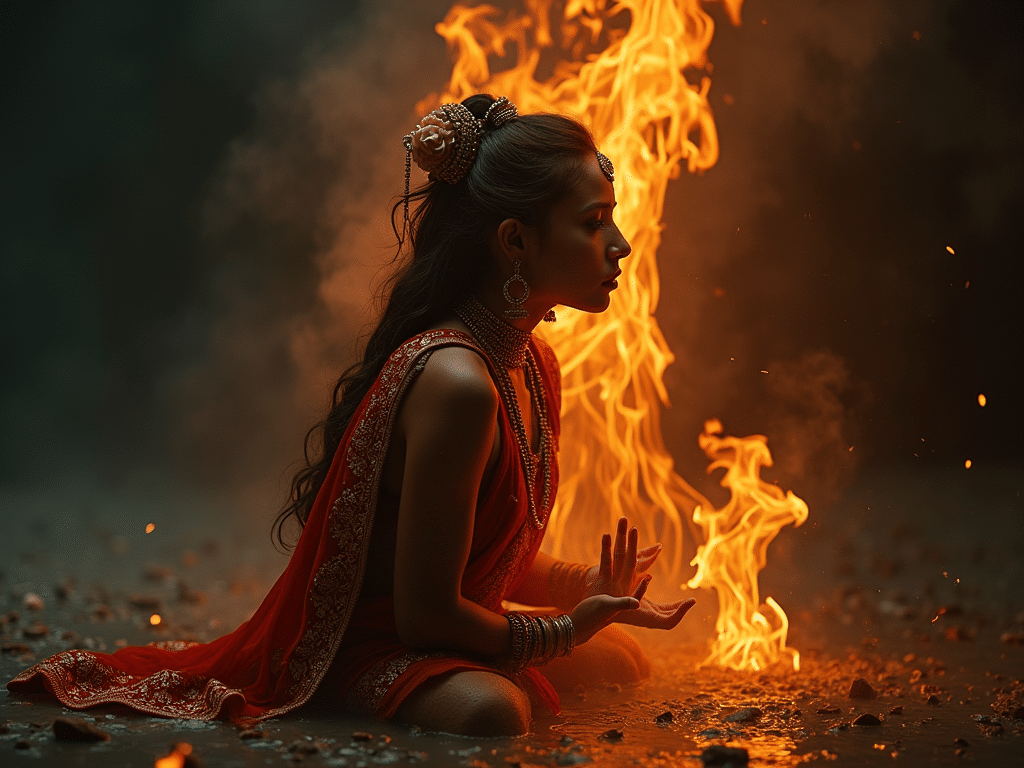Antarvasna is a term deeply rooted in Indian literature, often associated with the exploration of internal desires and human sexuality. Originating from ancient texts like the Kamasutra, it delves into the complexities of human emotions and yearnings. This concept has been a significant part of South Asian cultural narratives, reflecting both historical and modern perspectives on desire.
Key Takeaways
| Aspect | Details |
|---|---|
| Definition | Represents internal desires, often linked to sexuality. |
| Cultural Roots | Originates from ancient Indian texts like the Kamasutra. |
| Modern Interpretations | Seen in contemporary media and literature as a symbol of self-expression. |

Understanding Antarvasna
Definition and Meaning
Antarvasna translates to “internal desires” or “hidden lust,” encapsulating deep-seated emotions often linked to sexuality but extending into broader emotional landscapes. This concept transcends language barriers, finding unique interpretations in Hindi, Bengali, and other Indian languages.
Cultural Context
- Emotional Expression: Antarvasna is not just about physical desires; it’s a reflection of emotional and psychological states.
- Language Variations: Different Indian languages offer diverse perspectives on Antarvasna, each resonating with cultural nuances.
For more on how language shapes cultural expressions, check out our article on Onomatopoeia.
Historical Background

Origins in Ancient Texts
Antarvasna finds its roots in Sanskrit literature, particularly the Kamasutra. This ancient text serves as a guide to understanding the multifaceted nature of human desires, framing Antarvasna within a cultural and philosophical context.
- Kamasutra’s Influence: The Kamasutra explores Antarvasna by providing insights into human sexuality and emotional complexity.
- Hindu Eroticism: These texts highlight how desire is intertwined with spiritual and philosophical teachings.
Role in Kamasutra
The Kamasutra addresses Antarvasna by emphasizing the importance of understanding one’s desires as part of a balanced life. It presents desire as a natural aspect of human existence, encouraging readers to explore their inner yearnings responsibly.
For more insights into historical perspectives on desire, see our guide on Bookend Meaning.
Antarvasna in Modern Context

Contemporary Interpretations
In today’s world, Antarvasna has evolved into a cultural symbol that permeates modern Indian media, literature, and film. It reflects the ongoing negotiation between traditional values and modern expression.
- Media Representation: Films and books often depict Antarvasna as part of character development, exploring themes of repression and liberation.
- Pop Culture Influence: The concept is frequently referenced in discussions about identity and self-expression.
Psychological Perspective
Modern psychological theories also shed light on Antarvasna by addressing human desire and repression. These theories explore how internal desires manifest in behavior and influence personal relationships.
Cultural Significance
Influence on Art and Literature
Antarvasna has inspired various forms of artistic expression, from classical Indian poetry to modern visual arts. It serves as a lens through which artists explore the complexities of desire and human emotion.
- Erotic Art: Many artists have used Antarvasna as a theme to depict the beauty and intricacy of human desires.
- Literary Works: Writers often incorporate Antarvasna into narratives to highlight character motivations and inner conflicts.
Comparisons with Other Cultures
While Antarvasna is deeply rooted in Indian culture, similar concepts exist worldwide. Comparing these can highlight the unique aspects of Antarvasna:
- Western Traditions: In Western literature, themes of internal desire often appear in works exploring existential and romantic dilemmas.
- East Asian Perspectives: East Asian art and literature also delve into themes of desire, though often with a focus on harmony and balance.
For more on how cultural expressions vary globally, you might find our article on Mexican Slang insightful.
Criticism and Controversy
Moral Debates
Antarvasna often straddles the line between tradition and modernity, leading to debates about its portrayal in media:
- Perceived Immorality: Critics argue that focusing on lust can overshadow the broader emotional aspects of Antarvasna.
- Cultural Stigma: There is concern that openly discussing such desires might conflict with traditional values.
Balancing Tradition and Modernity
The challenge lies in interpreting ancient concepts like Antarvasna in a way that respects tradition while embracing modern perspectives:
- Social Stigma: Addressing the stigma associated with discussing internal desires is crucial for a balanced understanding.
- Cultural Heritage: Emphasizing the historical significance of Antarvasna can help bridge the gap between past and present interpretations.
For more on navigating cultural shifts, see our discussion on British Slang.
Conclusion
Antarvasna remains a vital part of cultural narratives around desire, offering insights into both historical contexts and contemporary interpretations. Its enduring relevance highlights the timeless nature of human emotions and the complex interplay between cultural identity and personal yearning.
By understanding Antarvasna, we gain a deeper appreciation for how cultures express internal desires and navigate the balance between tradition and modernity. As society continues to evolve, so too will the interpretations of this rich concept, ensuring its place in both art and everyday life.
For further exploration of cultural expressions, check out our articles on Australian Slang and New York Slang, which offer insights into regional language nuances.







